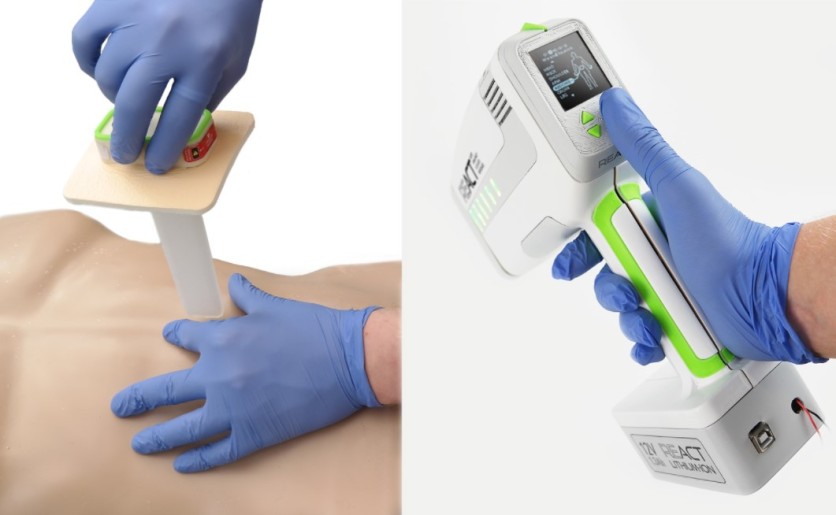A new device that stems blood loss in stab wounds has won its 22-year-old designer the UK James Dyson Award. Joseph Bentley won the design award along with £2,000 that will be used to continue developing his device.
Bentley is a product design graduate of Loughborough University in Essex.
New Device Stems Blood Loss Due to Stab Wounds
The new device that can potentially save lives of stab wound victims is known as the Rapid Emergency Actuating Tamponade, otherwise known as the REACT device.
The REACT device "uses a rapid, inflatable Tamponade device that is inserted into the stab wound. The automated inflation of this Tamponade provides internal pressure direct to the bleeding site, controlling bleeding faster than current methods," according to an article posted on the James Dyson Award website.
In an interview with the BBC, the creator of the device, 22-year-old Joseph Bentley, began developing the prototype after two of his friends became involved in stabbing incidents.
"Seeing the profound effect that it had on my friends and their families urged me to try and create a solution that could help others in the future," Bentley told the BBC.
Bentley added that he is looking forward to using the £2,000 prize money to further develop his REACT device so that it can be used to save lives.
Related Article: XStat by RevMedx can plug gunshot, shrapnel wounds in seconds
How the REACT Device Works

According to the article on the James Dyson Award website, a first responder can use the REACT device to implant a medical-grade silicone balloon tamponade into the wound track.
There is an actuator device that is connected to the tamponade valve, which the first responder can use to select the wound location using the rear OLED UI.
Per the article, "squeezing the trigger on the actuator starts the automated inflation sequence, and the Tamponade is inflated to a defined pressure based on the wound location (150-180mmHg)."
The actuator device has pressure sensors that can measure and ensure the desired pressure. The actuator also has LED arrays that can provide the first responder with visual information feedback.
According to the device's creator, the REACT device can stop hemorrhage in less than one minute.
How the REACT Device is Different from Current Techniques
Joseph Bentley created the REACT device in order to "help police treat knife wounds while waiting for medical assistance to arrive," according to the BBC.
The article on the James Dyson Award website cites a 2019 statistic that 259 people were killed using a sharp instrument in 2019. Most of those cases involved blood loss as the cause of death.
"It takes 10 minutes for an ambulance to arrive in London, but it only takes 5 minutes to bleed to death," the article says.
The article further states that the police are not equipped with rapid and accessible tools that can help stem blood loss of stabbing victims. It mentions that the usual protocol for treating stab wounds is to not remove the object impaled in the victim's body.
"This is because the object is applying internal pressure to the wound site whilst also filling the cavity, preventing internal bleeding. REACT is based on the same principle," it reads.
Current techniques used by first responders to treat stab wounds are described in the previously mentioned BBC article as slow. These techniques, which include tightly packing the wound in gauze, are also very painful for the victim.
Other Techs Used to Stem Blood Loss
In 2014, a tool with sponge sealing technology that can stem blood loss from bullet wounds was developed by RevMedx.
In the same year, it was also reported that a doctor used Google Glass to stop the bleeding inside the brain of a patient allergic to certain drugs that can stem the bleeding.
Also Read: This Algae-Based Healing Gel Can Stop Bleeding In Animals In Less Than 10 Seconds
This article is owned by Tech Times
Written by Isabella James




